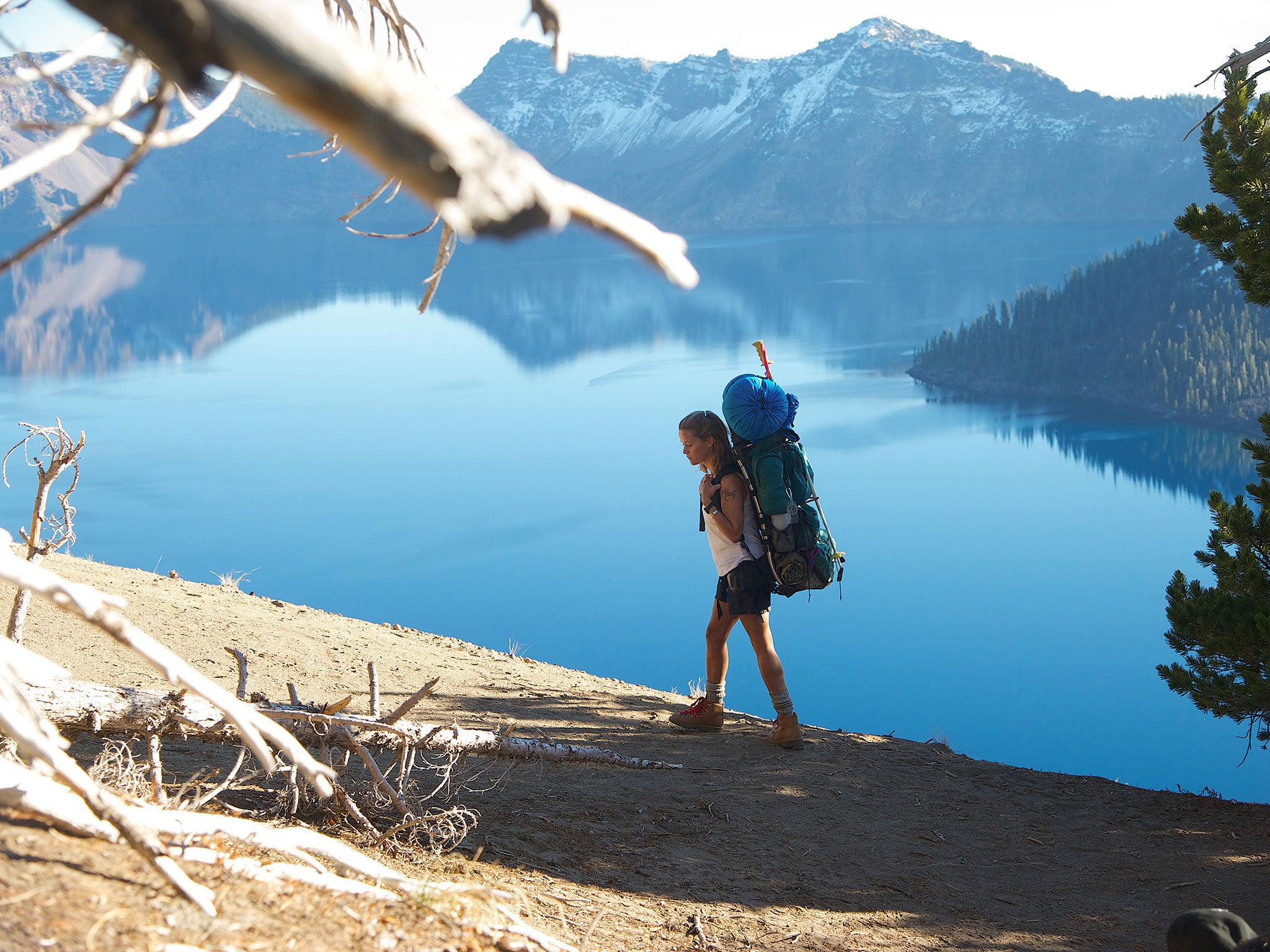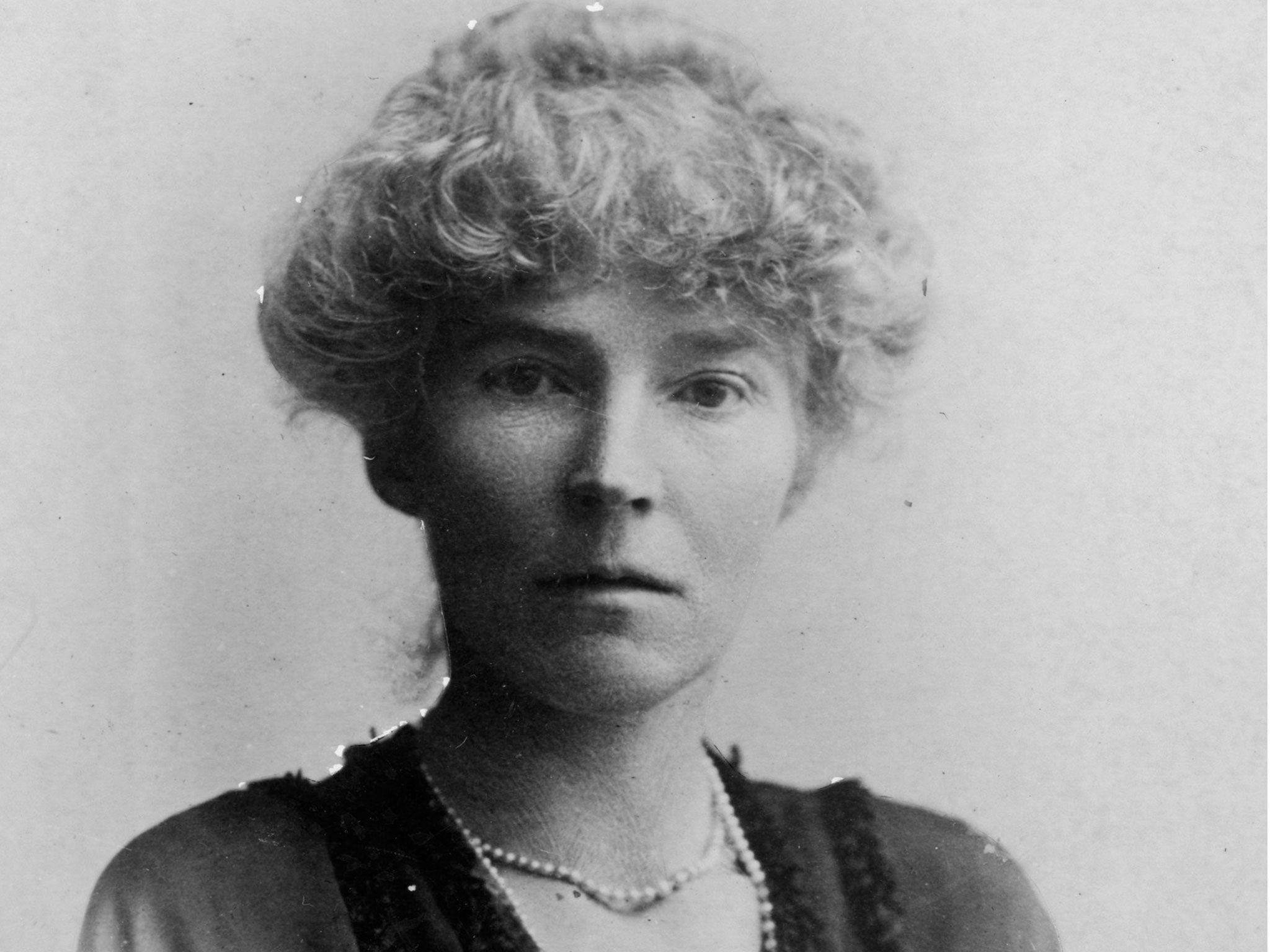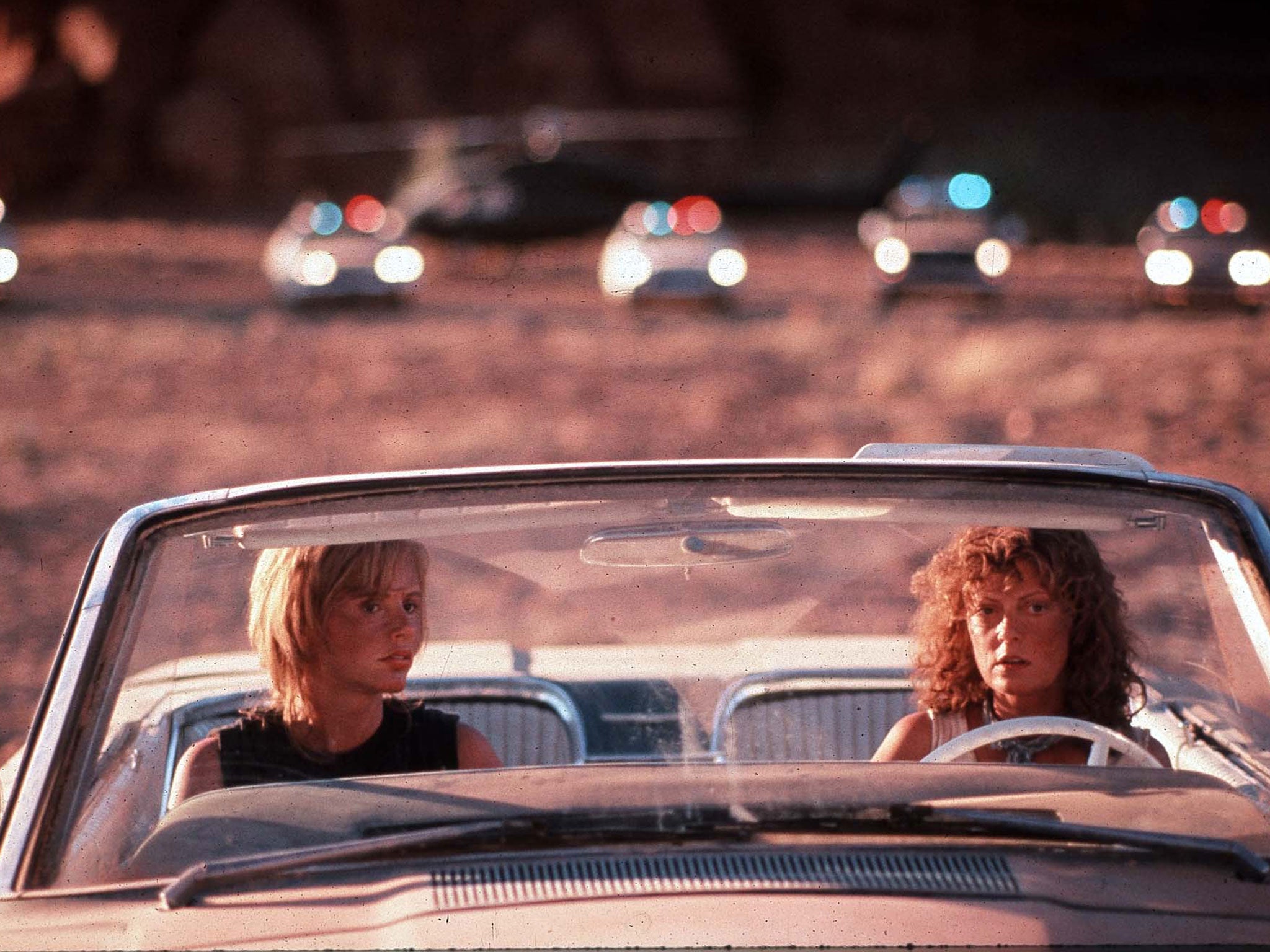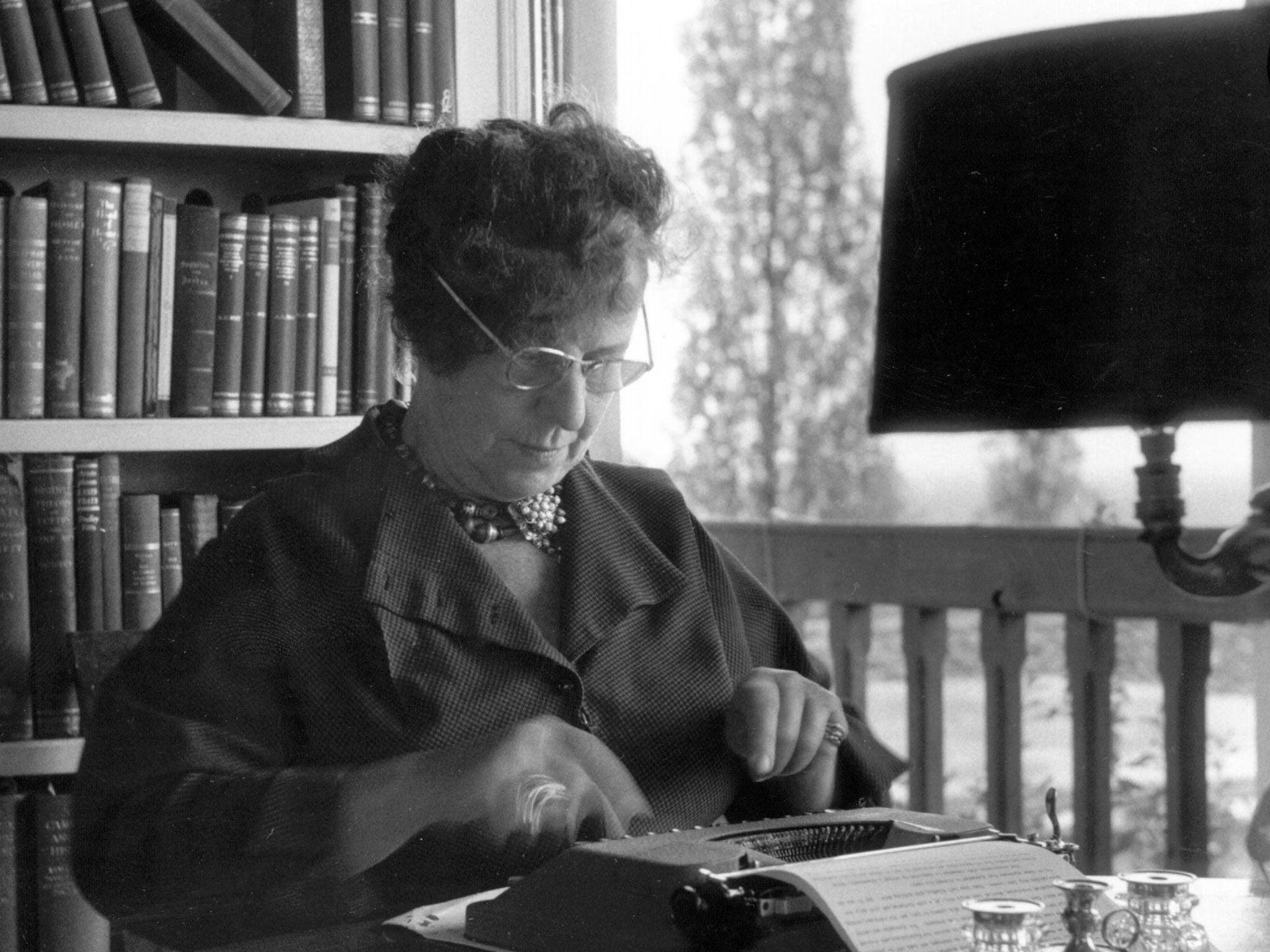Reese Witherspoon in 'Wild': An all too rare story of a woman on a solo adventure
Author and adventurer Lois Pryce explores the history of female explorers

There is a scene in the film Wild in which Cheryl Strayed (played by Reese Witherspoon) runs out of food in the middle of nowhere and is forced to hitch a ride into town with a farm worker, an overweight middle-aged guy in a pick-up truck. Is he creepy? Is something awful about to happen to her? We’re not sure, but he makes a few possibly untoward comments and, as Witherspoon edges into the passenger seat, she blusters nervously about her “husband”, who has gone ahead and is waiting for her, “just up the trail”. Of course, there is no husband. She is all alone in the wilderness with her ill-fitting boots, her over-laden backpack and total lack of experience of the outdoors. As it turns out, the truck driver is a good egg. He invites our uneasy heroine into his home, where a welcoming wife provides a bed, dinner and a hot shower – and we sigh with relief.
What this scene does so perfectly is capture two fundamental truths about the female experience on the road. Firstly, that a woman travelling alone is conditioned to expect the worst and, secondly, that this fear is unfounded because, actually, most people are kind, hospitable and curious. I know this from first-hand experience; I have lived that exact scene (including the husband line) all over the world, from Alaska to Angola to Iran during the round-the-world journeys that I have taken on my dirtbike. I never quite lost my wariness, but my instinct became honed and I learnt to trust it.

Female characters in road movies tend to occupy either the role of love interest or the moll along for the ride, which makes Wild such a refreshing experience, even more so because it is a true story, as told in Strayed’s wonderful memoir of the same name. Following the death of her mother, the subsequent destruction of her family and her marriage, and a decline into a life of squalor that threatened to engulf her, Strayed decided to hike the 1,100-mile Pacific Crest Trail for that time-honoured reason – salvation. But Wild is no self-help whinge-fest. What makes Strayed’s story so engaging is her unrepentant acknowledgment of her past mistakes, her unpreparedness for the journey and her raw honesty about the whole damned complicated business of being human, and trying to do it right.
Thankfully, for fans of the book, Nick Hornby’s masterful script maintains the grittiness of Strayed’s original story and keeps the whiff of Hollywood cheese at bay. Our protagonist swears and laughs, she is scared and joyful, she screws and she cries, and when we see Witherspoon’s bare, gangly legs stepping away from a freshly laid turd squashed, with toilet paper, under a cairn of well-placed rocks, we know that, for once, we’re getting the real deal. And perhaps this is why we don’t see many female-led adventure movies; because the reality of life on the road is too primal for public consumption – it’s messy and crude, and fun and occasionally hairy, in both senses of the word. All of which are regarded as unfeminine and, therefore, unpalatable for mainstream cinema.
Some would argue that women adventurers are a rare breed, so why make films about them? It is true that they are in the minority compared to their male counterparts, but with a bit of detective work you will find them, women of all ages and nationalities doing impressive, courageous expeditions all over the world, as has been the case for decades. We just don’t get to hear about them. I know that I am not alone in wondering why there is no visible female version of Bear Grylls or Ray Mears. When this subject came up in a conversation that I had with a leading talent agent recently, he cited his attempt to sell a memoir by a female extreme marathon runner, which was repeatedly rejected by publishers on the basis that “people aren’t interested in women’s adventures”. The suggestion being that even in the 21st century there is something discomfiting about the image of a gung-ho, capable female. As the truck driver in Wild says to his wife as they sit down to dinner with Cheryl: “Don’t go getting any ideas about joining her.” A wild, free woman is a dangerous concept.
Unfortunately, the usual double standards that are bandied around when it comes to sexual adventure also apply when it comes to regular ol’ adventure, too. If a man is unprepared or ill-equipped for a daring expedition, he is devil-may-care and brave. A woman in the same situation is ditsy and irresponsible. I hope that Wild will go some way to demonstrating that it is OK for the fairer sex to get down and dirty, to embrace the glory and the grot of the great outdoors and to revel in taking risks, whether you know what you’re doing or not.

But for all of its earthy spirit, Wild still perpetuates the idea that women need a deep, meaningful reason to hit the road. This is not a notion that has troubled many men in the history of exploration, who rarely find themselves having to explain their motivation to every bemused stranger they meet, an all-too-familiar experience for female travellers. The common perception is that a woman travelling alone and living “dangerously” can’t possibly be doing it just for fun, or as a personal challenge or simply to see the world – she must be escaping some kind of personal turmoil. And sure enough, in Wild, as with Thelma & Louise or Eat Pray Love, the lead character is fleeing her messed-up life, embarking on a mission of finding, rather than losing, herself. The message is further compounded when we discover at the end of the film that she goes on to get married and have two children, the ultimate fairytale ending.
Of course, this is the classic quest story and there is nothing wrong with that as a narrative form – the reader/viewer needs a reason to root for the protagonist and gets rewarded with the desired resolution. All good. But in real life, is there anything wrong with having an adventure for the sheer hell of it? Can’t women just hit the trail because they’re curious about some place they haven’t been before? Because they want to test their wits in the big wide world? Because they crave excitement and unpredictability and want the thrill of waking up to a different view each day? If George Mallory can famously climb Everest “because it’s there”, isn’t it possible that a woman could feel the same way? Bring on the day when we read a female version of Sal Paradise’s unashamedly hedonistic calling from On The Road, “Somewhere along the line I knew there would be girls, visions, everything…”
Digging up history’s female adventurers uncovers some remarkable women, most of whom are now residing in the Where Are They Now file. Two who did gain recognition in their lifetime are Gertrude Bell, whose work helped to establish the modern state of Iraq, and Freya Stark, who refreshingly laid her cards on the table when she declared that “for my own part I travel single-mindedly for fun”. This quote belies the pioneering nature of her explorations in the Middle East during the 1930s, as well as her significant contribution to mapping the region, and her prolific travel writing. But it does go to show that fun and adventure are worthwhile pursuits in themselves and can live happily alongside meaningful, useful experiences – all without any requirement for inner anguish.

Less well known are Theresa Wallach and Florence Blenkiron, two British women who in 1935 became the first people to travel the length of Africa overland. Wallach’s book, The Rugged Road, tells a staggering tale of true grit, remarkable ingenuity and mechanical skill as they tackle the Dark Continent in their sidecar outfit. As keen trials riders and racers, Theresa and “Blenk” were not averse to bucking trends, but when they tried to drum up sponsorship for the expedition, no business wanted to get involved in backing these two unlikely explorers in their “preposterous” mission. Sadly, not much has changed on that front and many highly skilled female athletes and adventurers still find themselves banging on the same closed doors. Theresa and Blenk’s story is as inspiring as Sir Wilfred Thesiger’s or Sir Edmund Hillary’s, but theirs remains obscure, as do those of Barbara Toy, an Australian who made many desert expeditions in the 1950s, Annie Londonderry, a Jewish-American mother who became the first woman to bicycle around the world in 1894, and the truly groundbreaking Bessie Stringfield, who busted every boundary when, in 1930, she became the first black woman to ride a motorcycle across the US, aged just 19.
Today, more women than ever are seeking out challenging solo adventures – from round-the-world cycle rides and ocean rowing to all manner of extreme kayaking, motorcycle and even hitch-hiking world tours. But apart from a few who achieve recognition, such as the superb Sarah Outen, who was appointed MBE for her rowing and cycling expeditions, their exploits remain unknown in the wider world. It is hard to believe that this is due to lack of a good story. It is more likely the result of a lack of appetite in a mainstream media that is more comfortable with a chest-thumping, air-punching approach to adventure stories. On the whole, the motivation of women adventurers tends more towards the personal and exploratory, rather than a desire to become a headline-grabbing “first” or “fastest” statistic.
Although it is heartening that more women are striking out on adventures, we are still in desperate need of more stories like Wild. We still live in an age when girls and women are told to be pretty, obedient and afraid, where colleges advise female students on how to avoid being raped and we can buy nail varnish that tests whether our drinks have been spiked. It’s been slow progress, but in the last century we’ve got used to women in the workplace, in politics and business, driving cars, owning property, wearing trousers and all manner of activities that may once have been considered shocking. I hope and believe that we will see a time when a woman can set out alone to roam her world freely, without explanation or justification, and without fear.
‘Wild’ is on general release from Friday.
Lois Pryce is an author, adventurer and founder of the Adventure Travel Film Festival. Her most recent journey saw her undertaking a solo ride around Iran.
Join our commenting forum
Join thought-provoking conversations, follow other Independent readers and see their replies
Comments
Bookmark popover
Removed from bookmarks